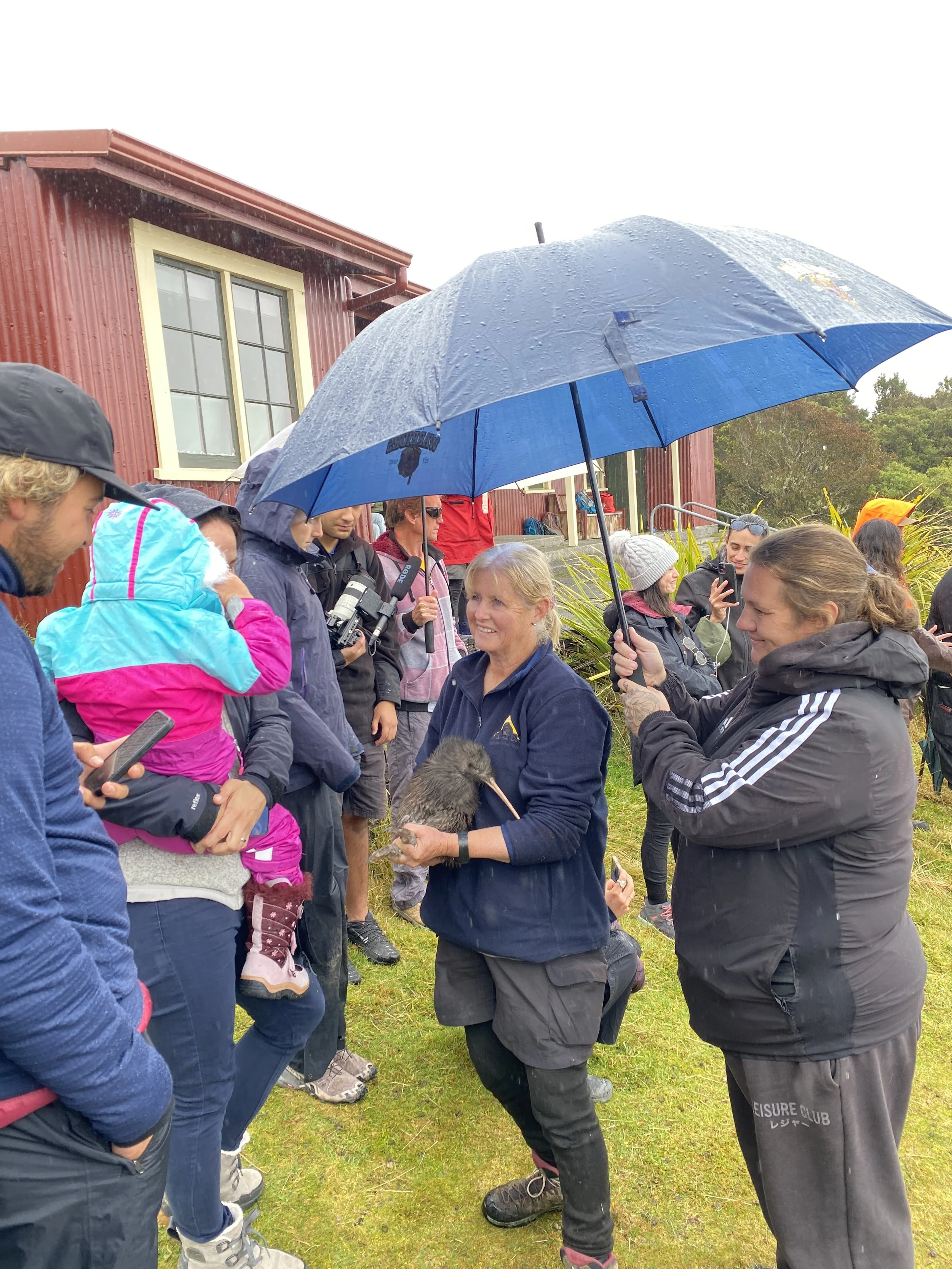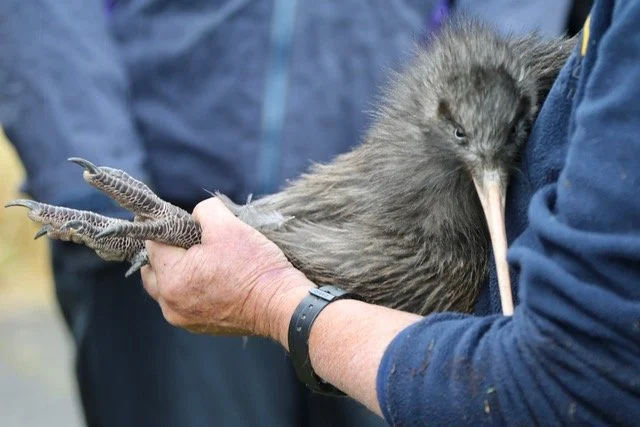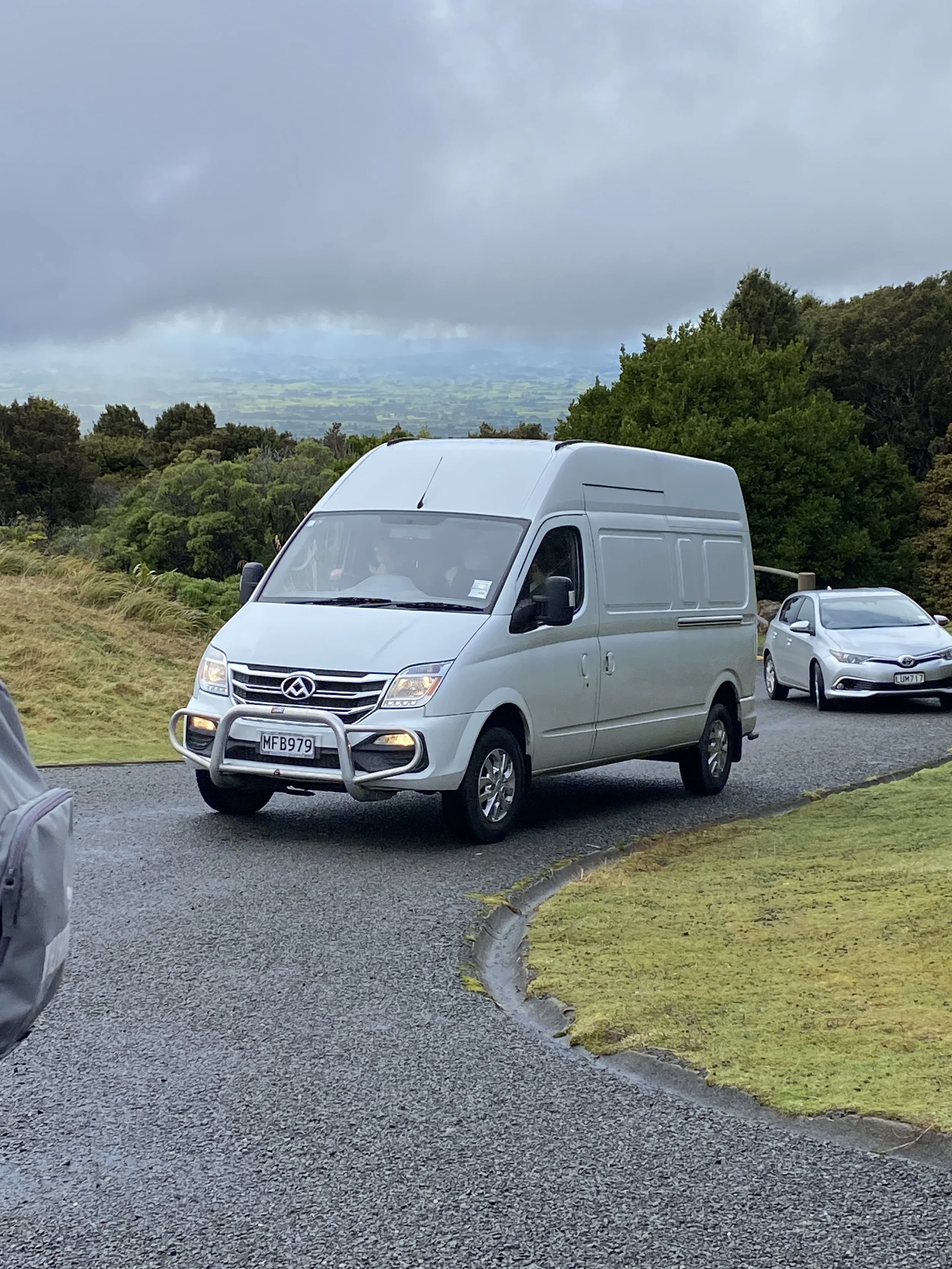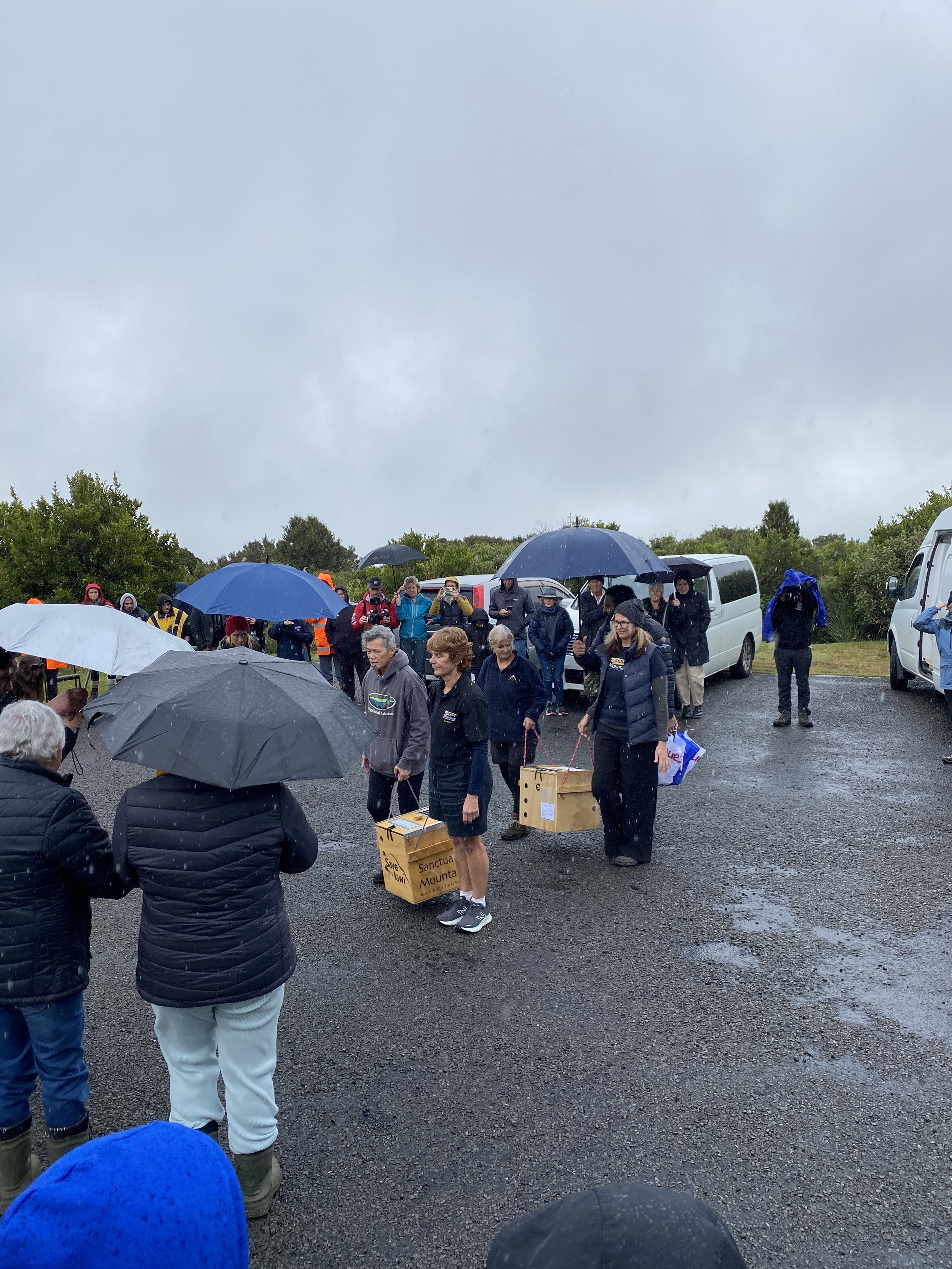The dream of Kiwi Conservation becoming reality-Te Ara Taiao
Ngā Manu Pīkoko – Our Tauira are eager and keen to learn, in other words Hungry “Pīkoko = To be Hungry.
"Ko te manu kai i te miro, nōna te ngahere. Ko te manu kai i te mātauranga, nōna te ao."
“The bird that feasts on miro tree berries belongs to the bush, the bird that feasts on knowledge belongs to the world.”
This is where the joy of the mahi and of the growing of understanding the Kaupapa (vision) of Te Ara Taiao is blossoming.
The Pou Manu (birdlife activities) learning stream, of Te Ara Taiao includes the kiwi release and taonga species monitoring.
Jane Bowden-Dobson, Kairuruku from Te Ara Taiao says, “we support special species recovery programmes and learning around special manu and things that should be in our environment and support them back into our environment”. She adds, that “getting student leaders together, from different kura, and celebrating their learning and their connection to this mahi, is the main role of Te Ara Taiao.”
One of the core values at Te Ara Taiao is Whanaungatanga (relationships). This value is expressed and upheld when they work alongside Taranaki Maunga Project, by sharing knowledge, skills and resources to grow the collective wellbeing of people and place.
Nō tō rourou, nā tōku rourou, ka ora ai te Kiwi.
With your food basket and my food basket the Kiwi will thrive.
For tamariki, Kaiako, Kairuruku and others passionate about Kiwi conservation, the opportunity to experience a kiwi release is one not to be missed.
The excited crowd gathered for a Kiwi release
On the morning of Thursday 2nd May, the dream became a reality for many. A gathering and celebration of the mahi that goes into Kiwi conservation was had, and 16 kiwi were released near North Egmont carpark.
The morning was cold and the weather full of mood. 35 Tamariki arrived and filled the air with excited whispers in anticipation of the VIP feathered arrivals. The walk up to The Camphouse, where everyone was to gather, was shining bright in the dappled light, a red beacon signalling the importance of the meeting place.
North Egmont Camphouse - Meeting place and crowd listening to the korero
Korero begins, with Tane Houston from Taranaki Mounga Project leading the way. The goal was 110 Kiwi moved to Taranaki from Maungatautari in through February, March and April and we have nearly achieved that he says. We celebrate this community, this bringing together and being part of something, celebrating tangata whenua. Tane acknowledges all the organizations involved, including Te Ara Taiao.
Tane Houston (front and centre), from Taranaki Maunga Project honouring all the organisations involved with their representatives - including Jane Bowden-Dobson from Te Ara Taiao (far right)
Sian (below left) and Sue (below centre), the Kiwi handlers from Taranaki Kiwi Trust are honored in their work. “They’re the best”, he says. Today we release onto the Taranaki maunga, a total of 16 birds. He says 10 are being released elsewhere in the park, while 6 are being released here at North Egmont.
This is the realisation of a dream Tane says, “of bringing Kiwi back to life,” and it’s happening now. More people are having the opportunity to experience a Kiwi release and of hearing and seeing Kiwi in their natural habitat, and it’s amazing.
The white van from the Sanctuary Mountain Maungatautari drives through the gate and parks. All the while tamariki from Te Pi’ipi’inga Kakano Mai I Rangiatea were softly singing a waiata of welcome for them.
Two kiwi are slowly and carefully removed from their boxes and held by Sue and Sian whilst being shown to the quietened crowd. The respect and love for these animals is apparent and real, and we all smile and acknowledge and send good wishes for their new life here on the slopes of Taranaki.
The crowd is quiet and murmuring, a soft hum of respect for these special manu. After some photos the kiwi are gently placed back in their boxes and the small team of people carry the boxes and go with them to their release sites.
The male and female are taken a short walk from The Camphouse and released into carefully scouted burrows, then ferns placed over the opening, for them to finish the rest of their sleep and acclimatise to their new home. Taranaki Mounga.
Main crowd dispersed and preparing to take Kiwi to their new home on the Maunga
Jane Bowden-Dobson says in an interview after the release, “Te Ara Taiao is fortunate enough to be under the wing of and have the support of a range of organisations in Taranaki. These include the Taranaki Mounga Project, DOC, and Hapu organisations and their taiao restoration priorities. We all work for the tamariki, and alongside them to try and give them as many opportunities as possible. So, Taranaki Kiwi Trust, today, they are opening the doors and allowing this exposure and this access for tamariki, which is just critical.”
Kairuruku Jane Bowden-Dobson from Te Ara Taiao being interviewed by Juliet from Taranaki Mounga Project
For the Taranaki region this season a total of 91 kiwi release including 43 of those went to Taranaki Maunga and 36 Kiwi released on the Kaitake Ranges.
Tane Manukonga, Kaiwhakahaere (regional manager Te Ara Taiao), shares, “the name Te Ara Taiao means the environment pathway, we wanted tamariki to have a pathway to know and understand the environment but also it’s this connection piece that identifies a career pathway.”
Through increased connection with, and important mahi (work), in the Taiao (natural environment), tamariki begin to understand more about themselves and who they are. They start to feel a deeper connection to where they are, and their vital role in contributing to the wellbeing of Maunga Taranaki and their local rohe (district or region).
The project aim is to increase the Mauri and ecology of Taranaki Maunga and our starting point is to grow Tamariki/mokopuna within our Taiao so that the Mauri (life-force) can be first be pono (true) and tika (correct) within them to inspire and better position the intergeneration approach required for future generation.
These are the Hungry birds chattering, and a conservation dream, of understanding, of action, and of ensuring tamariki establish strong connections to whenua, awa and moana.
The voices of these tamariki are strong, and Te Ara Taiao provides the pathway to use and to grow these important voices - Ngā manu pikoko.














